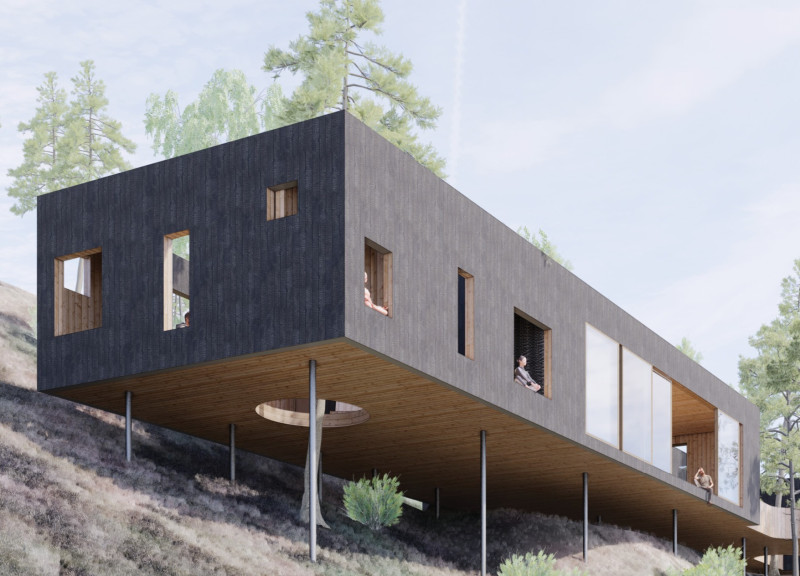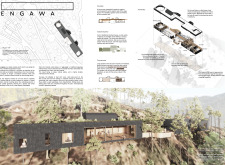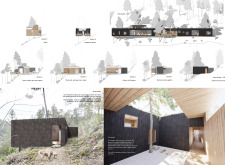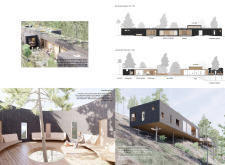5 key facts about this project
The layout of the Engawa project is carefully planned to encourage a seamless flow between distinct functional areas. The elongated and narrow building footprint facilitates the circulation of occupants, guiding them from one space to another through the central engawa. The design incorporates diverse spatial configurations that support both group gatherings and individual reflection.
The use of materials is central to the project's philosophy. Key elements include charred wood, known as yakisugi, which enhances durability while providing a distinctive aesthetic. This choice reflects a commitment to traditional craftsmanship. Other materials, such as natural wood for interior finishes, metal columns that minimize the visual footprint, and glass for maximizing natural light, further contribute to the project's strong connection to its surroundings.
The Engawa project stands out through its unique design approaches, which integrate environmental considerations into the overall architectural framework. Natural ventilation is achieved through strategically placed sliding glass doors and openings, reducing reliance on mechanical heating and cooling systems. Additionally, the roof is designed to accommodate solar panels, emphasizing sustainability. The building's lightweight structure minimizes ground disturbance, thus preserving the existing landscape and promoting ecological balance.
The project features several key areas that provide distinct experiences. The Shala serves as a dedicated space for yoga and movement activities, enhanced by ample daylight and views of the landscape. A meditation garden is included as a circular retreat for introspection. Multipurpose decks are designed to facilitate social interaction while offering flexibility in usage and layout.
This architectural design emphasizes an ongoing dialogue with nature, inviting occupants to engage with their environment physically and emotionally. By exploring this project in detail, including its architectural plans, sections, and specific design features, readers can further understand the intentions that shaped the Engawa project and its contributions to modern architectural practices.


























